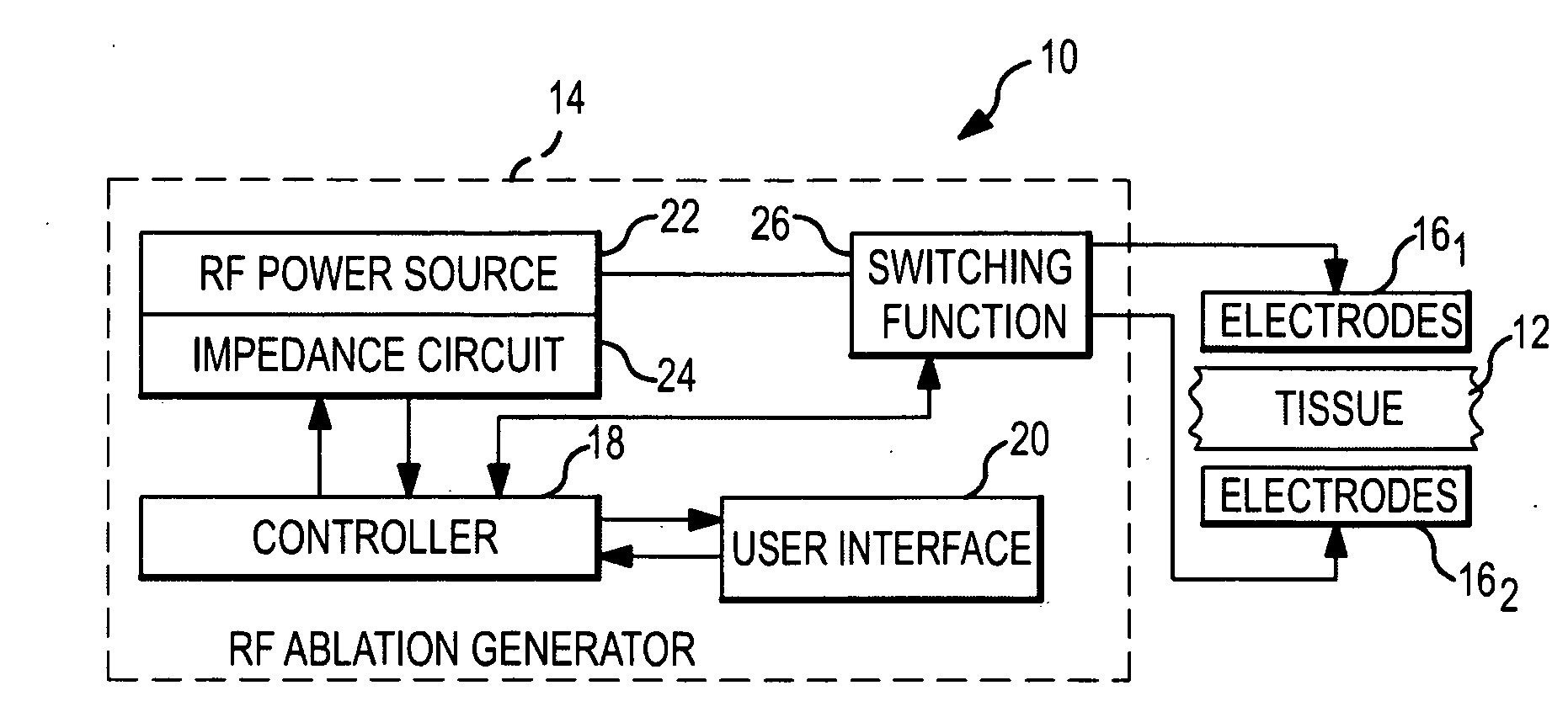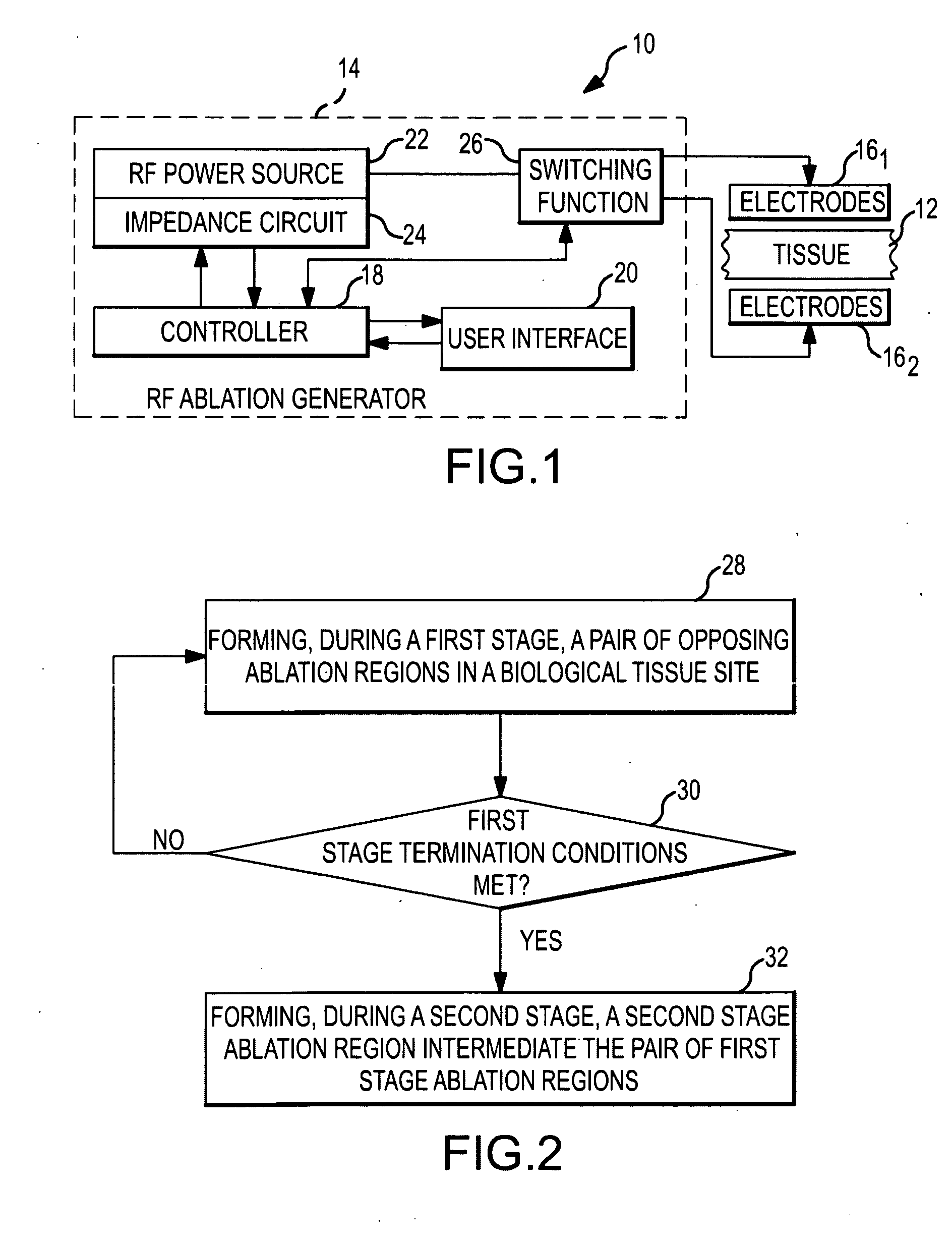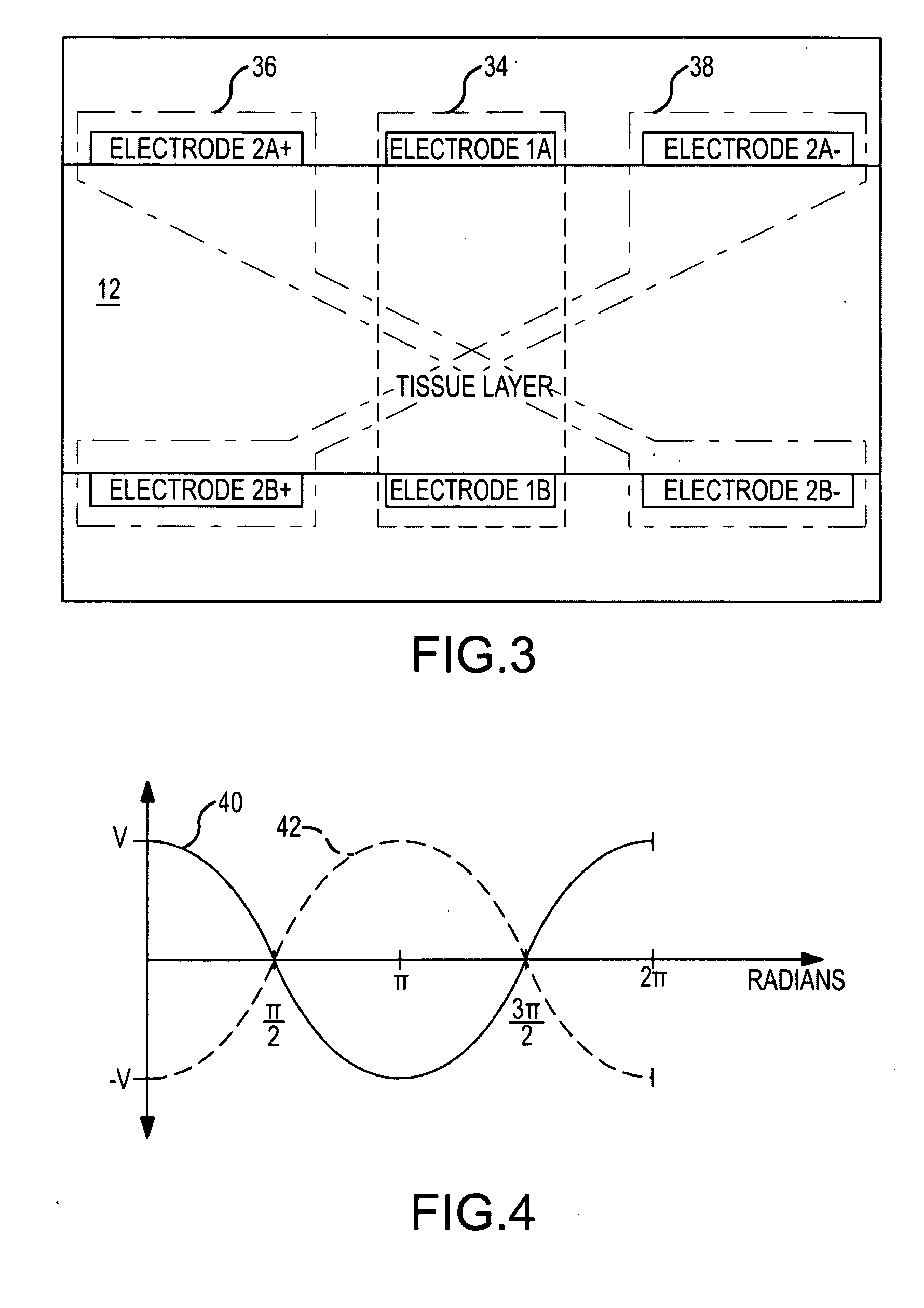Method and apparatus for radiofrequency ablation with increased depth and/or decreased volume of ablated tissue
a radiofrequency ablation and tissue technology, applied in the field of ablation systems, can solve the problem that the stage may not completely ablate the site, and achieve the effect of reducing the overall volume of ablated tissue and increasing the depth of rf ablation lesions
- Summary
- Abstract
- Description
- Claims
- Application Information
AI Technical Summary
Benefits of technology
Problems solved by technology
Method used
Image
Examples
Embodiment Construction
[0022]Referring now to the drawings wherein like reference numerals are used to identify identical components in the various views, FIG. 1 is a simplified block and diagrammatic view of a system 10 for conducting RF ablation of a live, biological tissue site 12. The system 10 is configured to increase the depth of lesions created through RF ablation as well as reduce the volume of ablated tissue for a given tissue thickness. The method divides the ablation process into two main stages, which, without loss of generality, will be described in connection with a number of bipolar ablation embodiments. Although there are many possible uses of the present invention, one in particular may involve epicardial ablation, such as, for example, as therapy in connection with the treatment of atrial fibrillation. In this regard, the tissue site 12 may comprise either a single layer of tissue (e.g., tissue wall), or may alternately comprise a pinched or clamped pair of tissue layers such as describ...
PUM
 Login to View More
Login to View More Abstract
Description
Claims
Application Information
 Login to View More
Login to View More - R&D
- Intellectual Property
- Life Sciences
- Materials
- Tech Scout
- Unparalleled Data Quality
- Higher Quality Content
- 60% Fewer Hallucinations
Browse by: Latest US Patents, China's latest patents, Technical Efficacy Thesaurus, Application Domain, Technology Topic, Popular Technical Reports.
© 2025 PatSnap. All rights reserved.Legal|Privacy policy|Modern Slavery Act Transparency Statement|Sitemap|About US| Contact US: help@patsnap.com



